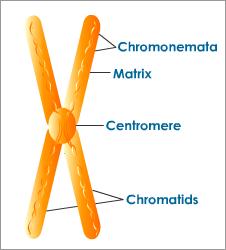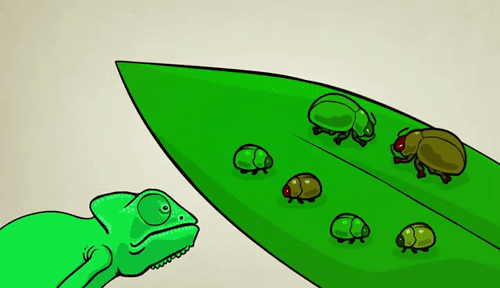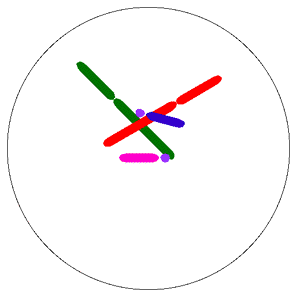
Paul Adams
Creator & designer
Bournemouth and Poole College
In the short term, I plan on completing my the access course and gaining a place to university. In the long term I hope to gain a masters, and PhD in Phamacological sciences. My experience with technology and creating this website provides the skills I need to "get a foot in the door". With technology moving so quickly, scientists in any field, need to have the ability to quickly shift and learn new techniques of investigation. With this in mind, I hope to go further in exploring Pharmacoinformatics being the study of pharmacology and computational systems of the future.
I have experience in working in Bars and restaurants which helped develop my "people" skills. Along with my position held as an SME for a large technological company supporting mobile devices, have also given me skills to get me ready for the challenges of university. This has also given me the opportunity to develop this website and Google Chrome Extensions.
Biology
We studied four units in Biology:
Cell biology
Body systems
Genetics
Plants and people
More information about each unit can be found below. Click on the title of one of them to open the tab. I haven't done anything on Body systems due to not having much on it, plus it was a pure exam.
Cell biology, the study of organic life.
Cell biology is the study of the cells in every living thing and the organelles within them.
This was our first assignment on the access to science course, I managed to get a distinction in this, but after this first triple distinction, it went down hill after that where I managed to scrape a pass in our body systems unit.
Anyway, I've managed to upload my work up here to download and view. I will admit the referencing wasn't perfect but I have tried to fix this before I uploaded it, so it's not the exact same assignment I submitted originally.
Go to my links and references page here to download my report.

Biotechnology
Genetics, was our third unit in Biology, after my poor grade in body systems, I put a lot of effort into this one. Luckily, my skills with technology came in handy and I was able to make a brilliant presentation.
At the time of uploading this (7th May 2018), I didn't know what my final grade was, although I did have an idea. So I haven't needed to modify anything.
Go to my links and references page here to download my powerpoint.
Cell cycle
In the cell cycle you have 2 main phases. One being where the cell divides/ separates into 2 daughter cells, called the prophase, or mitosis. This leads to cytokinesis - splitting the cytoplasm into 2 to form 2 new daughter cells.
The other is the interphase where the cell is growing and replicating DNA & organelles.
These essentially make up the 5 stages of the cell cycle. The first 3 stages are known as the interphase:
G1 - primary growth phase
S - synthesis; DNA replicated
G2 - secondary growth phase.
The last 2 stages of the cycle are:
M - Mitosis
C - Cytokinesis

In the interphase, the first stage is the growth directly after cell division, while continuing with normal processes.
The synthesis stage is where the DNA is copied or replicated.
The "A","T","C","G" bases run complimentary with each, meaning that "A" and "T" Pair together with 3 hydrogen bonds, and "C" and "G" pair together with 2 hydrogen bonds.

This is a Chromosome, where a single centromere holds together the double stranded length of DNA which equals 1 chromatid. After replication, you would still only have 1 chromosome, and one centromere, but where the Chromosome has split, there are 2 Chromotid.
DNA
Deoxyribonucleic Acid. Those 2 words have been drummed into my head more than any this year. DNA is a thread like chain of nucleotides carrying the genetic instructions used in the growth, development, functioning and reproduction of all known living organisims and many viruses.
The structure of DNA is a double helix, kind of like someone has taken a ladder and twisted it, in simple terms. DNA is made up of two Sugar-Phosphate backbones joined together by four nitrogen-containing nucleobases:
Cytosine
Adenine
Thymine
Guanine
The image below shows the structure of a double helix:

Each nitrogenous base has its own "Partner" that it can pair with, Adenine can only pair with Thymine, and Cytosine can only pair with Guanine. The reasons for this are complex, so the person reading this can find more information on the links and reference page
Evolution
Includes all of the changes in the characteristics and diversity of the life throughout time.
Evolution can occur on both large and small scales.
Microevolution
Macroevolution
The concept of evolution, that organisms may change over time, was not new in Darwin's time. However, it was not a widely accepted concept because no one understood how it could work.

A mechanism was missing.
Darwin provided that mechanism with his theory of Natural Selection
In any population of organisms there is natural variation
Some of these variations will allow the organisms possessing them to survive and reproduce better than those without these particular traits.
Natural selection
Like in the image below, the beetles that are more camouflaged have more of a chance to survive, than those that are not and get eaten by the lizard.

The sucessful traits will spread though the population.
This change in the frequency of alleles in the population is evolution.
Darwin observed that organisms have the potentical for very high fertility
Organisms have the potentical to produc, and often do.
If there are not enough resources for all of the individuals, there will be competition for those resources.
Survivors represent a small part of the individuals produced each generation
Which individuals will survive is often not a matter of luck.
Populations show variation - individuals are not identical.
They differ in many different traits
Some of the variations between individuals in the population is heritable.
It can be passed down from one generation to the next.
Some of the traits found in population enhance the survival and reproduction of the organisms possessing them.
The favoured traits will spread through the population
Over many generations, the species will become adapted to its environment
Over time, these changes can lead to the formation of a new species
A species may become adapted to its environment in response to environmental pressures.
A trait may be favoured due to enhanced survival or reproduction when faced with a particular aspect of the environment.
When an environment changes, or when individuals move to a new environment, natural selection may result in adaptation to the new conditions.
Sometimes this results in a new species
Environmental factors are variable.
A trait that is benefical in one place or time, may be detrimental in another.
Upsetting Genetic Equlibrium
Natural selection is not othe only way that allele frequencies can change from one generation to the next.
Genetic Drift - a random loss of alleles
Mutation - a new mutation can add alleles
Nonrandom mating - inbreeding increases the number of homzygous traits
Migration - shuffles alleles between populations; can prevent speciation.
Genetic drift
The smaller the sample, the greater chance of deviation from expected.
Mendelian Genetics
Gregor Johann Mendel was an Austrian monk, a very well respected scientist, teacher, banker, astronomer, breeder, etc who worked on pea plants. That is, heredity in pea plants. Mendel began experimenting with pea plants in 1856, these observations formed thed basis of all modern genetics.
The patterns he observed became known as Mendel's laws of heredity, at the time Mendel knew nothing of genes since DNA wasn't discovered until 1868. As Mendel was very good at mathematics, he was able to see various patterns in his peas.
Mendel came up with 3 law's of genetics:
| Law of Segregation |
|---|
| Law of Dominance |
| Law of Independent Assortment. |
How Traits are inherited
Meiosis halves the number of chromosomes, to create gametes, or sex cells. Chromosomes from two parents are passed onto sex cells during meiosis.
So essentially, 23 chromosomes in sperm, and 23 chromosome in the egg, makes a zygote, which has the normal 46 Chromosomes for a human.

rh blood group (+/-)
Nerve growth factor
Renin
Heredity - the transmission of genetic traits from parent to offspring.
Genetics - the study of heredity
True breeding - displaying only 1 form of particular trait in an offspring.
Monohybrid cross - a cross involving one pair of contrasting traits.
P Generation - (Parental generation) the first two individuals that mate in a genetic cross.
F^1 Generation - the first offspring from a cross of two varieties in the parental (P) Generation.
Mendel's initial experiments were monohybrid crosses.
He would select a single contrasting trait in two pea plants, for example height.
He would then breed these two plants (P generation) and observe which trait was expressed in the offspring (F^1 Generation, "child").
He would then take these offspring and mate them to see which traits would be passed to the next generation (F^2 generation, "grandchild").
With his results came an unexpected outcome, the first generation of the Parents came out smooth, where one parent was rough. When he had breeded the F1 generation where the rough gene wasn't present, the F2 generation had the rough gene.
Alleles: same gene different protein.
Over many, many years that we have been around, many genes have mutated.
Alleles: are different cersion of the same gene that code for slightly different proteins.
Alleles - alternative forms of genes.
Dominant - genetic trait that is expressed when its allele is homozygous or heterozygous.
Recessive - genetic trait that is not expressed when the contrasting form of the trait is present.
Dominant is always well dominant, but when it's not present the recessive gene takes president.
Some alleles are either neutral or good, others cause some serious problems.
| Neutral alleles | "Bad" alleles | |||
|---|---|---|---|---|
| Hair colour | Widow's peak | Skin colour | Blood type | |
| Haemophilia | Cleft Lip | Diabetes | Cataracts | Pattern Baldness |
Examples showing the dominant (B)/ recessive (b) genes and the results.
| Male | |||
|---|---|---|---|
| B | B | ||
| Female | b | Bb | Bb |
| b | Bb | Bb | |
| Male | |||
|---|---|---|---|
| B | b | ||
| Female | b | Bb | bb |
| b | Bb | bb | |
Before Mendel's work, people thought offspring were a blend of characteristics of each parent. For example, if a tall and short pea plant mated, the offspring would be all medium in height. This was not the case. When Mendel did this experiment he observed that all of the offspring were all tall in the F1 Generation.
Law of segregation - first law of heredity stating that pairs of alleles for a traid separate when gametes are formed.
Dihybrid crosses
Punnett diagram| Male | |||||
|---|---|---|---|---|---|
| RY | rY | Ry | ry | ||
| Female | RY | RRYY | RrYY | RRYy | RrYy |
| rY | RrYY | rrYY | RrYy | rrYy | |
| Ry | RRYy | RrYy | RRyy | RrYy | |
| ry | RrYy | rrYy | Rryy | rryy | |
Law of independent Assortment
Second law of heredity stating that pairs of genes separate independently of on another.
Homologous chromosomes carry genes that code for traits. these traits separate and will pair up again when the make and female gametes fuse during fertilization.
If you know the parents genotype, you can figure out the odds of an offspring inheriting a trait by making a Punnett square (as above).
A Test Cross is a genetic cross of an individual whose phenotype is dominant but whose genotype is unknown, with a homozygous recessive individual.
Mendel devised a way to determing the genotype of a plant that expressed the dominant trait.
Probability = Number of one kind of possible outcome
__________________________________
Total number of all possible outcomes
Using a Punnett square will result in specific numbered ratios. The ratios will remain relatively constant no matter how many times that cross is performed. Using this information a breeder can predict the probability that a trait will be expressed. This is very helpful in agricultrure or to those people that breed and sell different organisms.
Meaning table:
| Word/ phrase | Meaning |
|---|---|
| Heterozygous | Different genes, one dominant and one recessive |
| Homozygous | The same genes, be it both dominant or both recessive |

Plants and People
In Plants and people, we had been tasked with creating our own thing for 5 specific uses of plants. I chose to create a web page as part of this website. The following link will lead to that section of the site. I have made it partially separate and created a new theme for it to identify it as different since it is part of my assignment.
Biology Assignment Part A

